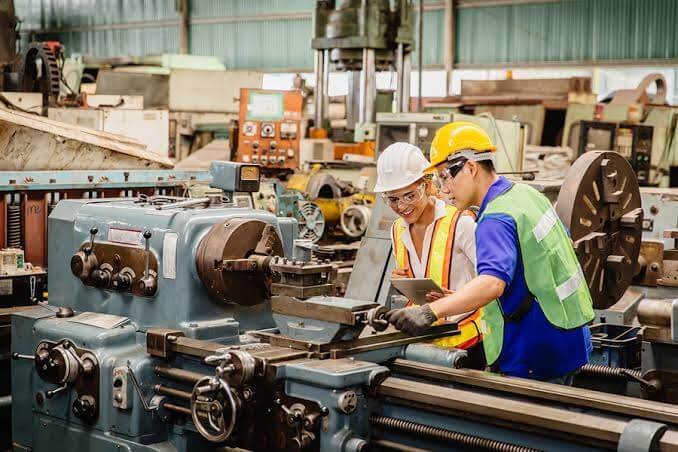In the evolving landscape of modern manufacturing, ensuring product quality is more important than ever. Traditional quality inspection methods are often insufficient to meet the demands of high-speed, high-precision production lines. Customized inspection solutions are revolutionizing the industry by offering tailored systems that align with specific production needs. These innovative solutions integrate advanced technologies like real-time defect detection, automated feedback loops, and in-depth analytics to enhance efficiency and consistency. By embracing these customized systems, manufacturers can not only elevate the quality of their products but also reduce waste, lower costs, and optimize production performance across various industries.
The Building Blocks of Customized Inspection Systems
Customized inspection systems are crafted with meticulous attention to every component. Here’s a closer look at the critical elements that make these systems robust and effective:
1. Electromechanical Systems
The foundation of any inspection system is a well-engineered electromechanical framework:
- Durable Design: Frames and positioning devices are built for stability and durability to withstand demanding production environments.
- Seamless Workflow Integration: Custom conveyance systems and configurations ensure smooth incorporation into existing production lines.
- Precision Engineering: Components are fine-tuned to maintain accurate alignment, ensuring reliable inspection results.
2. Advanced Imaging Systems
High-quality imaging systems are at the heart of defect detection:
- Tailored Imaging: Solutions are selected based on defect size, product surface, working distance, and more.
- High-Resolution Cameras: From 3D imaging to specialized lighting, every detail is captured to meet stringent quality requirements.
- Versatility: Imaging systems are adaptable to various product shapes and materials, ensuring consistent performance.
3. AI-Powered Software: Live Vision AI
State-of-the-art AI-driven software transforms defect detection:
- Real-Time Analysis: Live Vision AI processes images instantly to detect even the smallest imperfections.
- Custom Algorithms: The software is programmed to meet specific inspection needs, including dimensional measurement and surface analysis.
- Data-Driven Insights: Detailed reports and logs allow manufacturers to track performance and make data-backed decisions.
4. Robotic Automation
Robotic arms elevate automation and precision in inspection processes:
- Multifunctional: Robots handle tasks such as positioning, sorting, and rejecting defective items.
- Dynamic Responses: Robots adapt to inspection results, ensuring defective parts are managed without disrupting production flow.
- Integration: Robotic systems work seamlessly with vision systems and AI controllers for synchronized operation.
A Proven Approach: From Concept to Implementation
Developing a customized inspection system involves a structured, client-centric process:
Step 1: In-Depth Consultation and Analysis
We begin by understanding your manufacturing process and quality challenges:
- Assess production requirements and define inspection goals.
- Identify defect tolerances and automation needs.
Step 2: System Design and Engineering
Our engineering team crafts a solution tailored to your specific needs:
- Simulate and test performance to ensure smooth integration.
- Develop components like conveyors and inspection stations for precise operation.
Step 3: Vision System Integration
Advanced imaging technology is implemented to capture and analyze product quality:
- Address complex criteria such as micron-level defects detection or dimensional variations.
- Optimize lighting and camera positioning for maximum defect visibility.
Step 4: Robotic Automation
Robots are integrated for seamless product handling and defect management:
- Ensure accurate positioning during inspection.
- Automate sorting, rejecting, or reworking of defective products.
Step 5: AI-Driven Software Integration
The Live Vision AI software brings intelligence to the system:
- Provide real-time feedback to operators.
- Enable detailed tracking, analysis, and continuous improvement.
Step 6: Testing and Validation
Rigorous testing ensures reliability in real-world production environments:
- Conduct performance evaluations under various conditions.
- Make adjustments to optimize functionality and precision.
Step 7: Implementation and Ongoing Support
Finally, the system is deployed with full support:
- On-site installation and operator training.
- Continuous maintenance and updates for peak performance.
The Advantages of Customized Inspection Systems
Investing in a tailored quality inspection solution offers unparalleled benefits:
Tailored Precision
Customized systems are built to handle unique product specifications, defect criteria, and production processes.
Improved Efficiency
Automation minimizes human error, reduces downtime, and increases production throughput.
Scalability
Systems are designed to grow with your production needs, adapting to new products and inspection criteria.
Data-Driven Decision Making
Advanced reporting features provide actionable insights for continuous process improvement.
Key Features for Modern Manufacturing Excellence
Customized inspection systems stand out with these standout features:
Real-Time Defect Detection
AI algorithms detect defects instantly, allowing for immediate corrective action.
Adaptability Across Product Lines
Flexibility ensures the system can accommodate diverse products and changing quality standards.
High-Speed Performance
Engineered to keep up with fast-paced production lines without sacrificing accuracy.
Detailed Analytics and Reporting
Comprehensive reports enable manufacturers to identify trends, recurring issues, and improvement opportunities.
